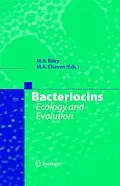Microbes produce an extraordinary array of defense systems. This book tells the fascinating story about the evolutionary histories of bacteriocins and the ecological roles of these biological weapons in microbial communities. The book makes compelling reading for a multi-faceted scientific audience, including those working in the fields of biodiversity and biotechnology, notably in the human and animal health domain.
Zusammenfassung
Microbes produce an extraordinary array of defense systems. These include bacteriocins, a class of antimicrobial molecules with narrow killing spectra, produced by bacteria. The book describes the diversity and ecological role of bacteriocins of Gram-positive and Gram-negative bacteria, presenting a new classification scheme for the former and a state-of-the-art look at the role of bacteriocins in bacterial communication. It discusses the molecular evolution of colicins and colicin-like bacteriocins, and provides a contemporary overview of archaeocins, bacteriocin-like antimicrobials produced by archaebacteria. Furthermore, various modeling (in silico) studies elucidate the role of bacteriocins in microbial community dynamics and fitness, delving into rock-paper-scissors competition and the counter-intuitive survival of the weakest. The book makes compelling reading for a multi-faceted scientific audience, including those working in the fields of biodiversity and biotechnology, notably in the human and animal health domain.
Inhalt
The Diversity of Bacteriocins in Gram-Negative Bacteria.- Molecular Evolution of Bacteriocins in Gram-Negative Bacteria.- The Diversity of Bacteriocins in Gram-Positive Bacteria.- Peptide and Protein Antibiotics from the Domain Archaea: Halocins and Sulfolobicins.- The Ecological and Evolutionary Dynamics of Model Bacteriocin Communities.- Bacteriocins' Role in Bacterial Communication.
